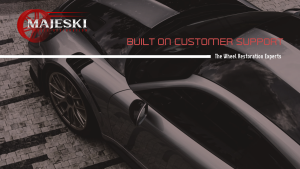
Understanding Alloy Wheels
Alloy wheels are made from a combination of metals, typically aluminum or magnesium, which provide several advantages over steel wheels. They are lighter, which improves fuel efficiency and handling, and they also offer better heat dissipation, reducing the risk of brake failure. Different types of alloy wheels come in a variety of finishes, such as chrome, painted, or polished, allowing for customization to suit individual preferences.
What are alloy wheels and their advantages over steel wheels
Alloy wheels are made from a combination of metals, typically aluminum or magnesium. They offer advantages over steel wheels, such as being lighter, which improves fuel efficiency and handling. They also provide better heat dissipation, reducing the risk of brake failure.
Different types of alloy wheels and their finishes
There are several different types of alloy wheels, each with its own unique finishes. These include chrome, polished, painted, and machined finishes. Chrome gives a sleek and shiny appearance, while polished wheels have a reflective mirror-like finish. Painted wheels come in a variety of colors and can be customized to match the vehicle’s style. Machined finishes have a clean and precise look with a combination of polished and matte areas.
The Wheel Repair Process
The wheel repair process begins with an assessment and inspection of the damaged wheels. Skilled technicians use various repair techniques based on the type of wheel damage, such as curb rash repair, wheel recoloring, or wheel refinishing.
Assessment and inspection of damaged wheels
Skilled technicians begin the wheel repair process by thoroughly assessing and inspecting the damaged wheels. They carefully examine the extent of the damage, such as curb rash or scratches, to determine the most suitable repair technique. This assessment ensures a precise and effective repair solution.
Repair techniques for different types of wheel damage
Skilled technicians employ various repair techniques to address different types of wheel damage. These techniques may include straightening bent wheels, filling in curb rash or scratches, repainting or refinishing damaged areas, and even replacing severely damaged wheels. These techniques ensure that the wheels are restored to their original condition and appearance.
Skilled Technicians and their Techniques
Skilled technicians in the field of wheel repair possess the necessary qualifications and expertise to restore damaged wheels. They utilize advanced techniques such as straightening bent wheels, filling in curb rash or scratches, and refinishing or repainting damaged areas, ensuring a professional and flawless restoration process. These technicians have a deep understanding of different types of wheel damage and know the best approach to effectively repair and restore them. With their knowledge and experience, skilled technicians can bring back the original beauty and functionality of alloy wheels.
Qualifications and skills required for wheel repair technicians
Wheel repair technicians require a combination of technical knowledge and hands-on skills. They must have a strong understanding of wheel construction, materials, and repair techniques. Additionally, they should possess excellent attention to detail, problem-solving abilities, and proficiency in using specialized tools and equipment.
Advanced techniques used by skilled technicians for wheel restoration
Skilled technicians employ advanced techniques for wheel restoration, such as CNC machining, which uses computer-controlled tools to precision-cut damaged areas. They also utilize powder coating, a durable finishing method that provides a seamless and long-lasting result.
Benefits of Wheel Repair
Wheel repair provides several benefits for both the appearance and performance of alloy wheels. By restoring and repairing damaged wheels, it enhances the aesthetic appeal and value of the vehicle. It also improves wheel performance and safety by addressing issues such as bent or cracked rims. Seeking professional wheel repair services helps maintain the beauty and longevity of alloy wheels.
Enhancing the aesthetic appeal and value of the vehicle
Wheel repair plays a crucial role in enhancing the aesthetic appeal of a vehicle. By fixing curb rash, scratches, and other damages, the wheels regain their original shine and finish. This not only makes the vehicle look more attractive but also adds value when it comes to resale or trade-in.
Improving wheel performance and safety
When alloy wheels are damaged, it can affect their performance and compromise safety on the road. By repairing and restoring the wheels, skilled technicians ensure proper alignment, balance, and functionality, enhancing both performance and safety for the driver and passengers.
Conclusion
In conclusion, seeking professional wheel repair services is crucial for maintaining the beauty and longevity of alloy wheels. Skilled technicians can restore damaged wheels, enhancing their aesthetic appeal, as well as improving performance and safety on the road. Regular maintenance and timely repairs ensure that your alloy wheels continue to showcase their beauty and functionality for years to come.
Importance of seeking professional wheel repair services
Seeking professional wheel repair services is important to ensure that damaged wheels are properly assessed and repaired by skilled technicians. This guarantees the restoration of beauty and functionality, improving the overall appearance and performance of the vehicle.
Maintaining the beauty and longevity of alloy wheels
Maintaining the beauty and longevity of alloy wheels is essential for preserving their original appearance and functionality. Regular cleaning, proper tire inflation, and avoiding harsh chemicals or abrasive cleaning tools can help prevent damage and extend the lifespan of alloy wheels.








